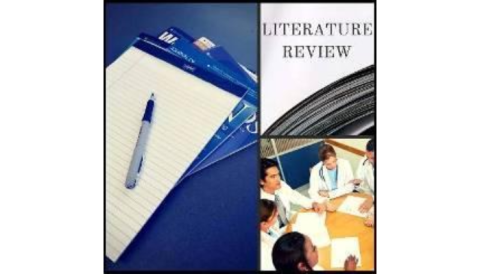Review: Study of Decellularized Dehydrated Human Amniotic Membrane Allograft Benefits
December 16, 2015
Temple University School of Podiatric Medicine Journal Review Club
Editor's note: This post is part of the Temple University School of Podiatric Medicine (TUSPM) journal review club blog series. In each blog post, a TUSPM student will review a journal article relevant to wound management and related topics and provide their evaluation of the clinical research therein.
Article title: Real-world Experience With a Decellularized Dehydrated Human Amniotic Membrane Allograft.
Authors: Janice M. Smiell, MD; Terry Treadwell, MD; Helen D. Hahn, RN, MBA; Michel H. Hermans, MD.
Journal name and issue: Wounds, June 2015 (pages 158-169).
Reviewed by: Hemali Patel, Temple University School of Podiatric Medicine Class of 2016.
Introduction
Decellularized dehydrated human amniotic membrane (DDHAM) allograft is indicated for the management of uninfected partial-thickness and full-thickness acute and chronic wounds. The membrane used in this study was composed of extracellular matrix and underwent minimal processing in order to maintain its native architecture. The tissue was electron beam irradiated to sterilize the membrane, giving it a shelf life of 5 years and the ability to be stored at room temperature. According to the authors, DDHAM allograft provides a replacement for fresh amnion used since the 1970s. Decellularizing and dehydrating the allograft reduces the potential for infection and immune reactions that occurred with the use of the fresh amnion.
Materials and Methods
In this paper a registry study was conducted to obtain evidence of the clinical benefit of using a sterile, DDHAM allograft and to explore the wound types that would most benefit. Good wound care practices based on the TIME approach (tissue, infection/inflammation, moisture balance, and edge of wound) to wound assessment and wound bed preparation were employed. These included debridement, maintenance of a moist environment, and pressure-offloading or compression where needed based on wound type. Advanced wound therapies available included topical recombinant human platelet-derived growth factor, living skin substitutes, acellular human dermal matrix, and a porcine small intestinal submucosa wound matrix.
This study was undertaken to assess the performance of DDHAM in chronic wounds with no active infections. Frequency of application of DDHAM and length of subject participation was at investigators discretion and complete wound closure was the only reason for removing subjects from therapy. Two sub-cohorts of the chronic wounds were defined. The Intent-to-Treat (ITT) group included the set of wounds of subjects who had initial and final measurements and a treatment/observation period greater than 3 days. The Good Wound Care (GWC) group comprised a large subgroup within the ITT group that resulted from removing the wounds of subjects who were noted to be grossly non-compliant with the prescribed wound care regimen. The most common types of wounds were venous leg ulcers, followed by diabetic foot ulcers, pressure ulcers, arterial ulcers, and ulcers caused by a collagen vascular disease such as lupus or rheumatoid arthritis.
Results
Patients had an average of 2.02 comorbidities, with diabetes mellitus and arterial insufficiency being the most common. As expected, subjects with more than one comorbidity were less likely to achieve complete wound closure, with the probability of closure was inversely related to the number of factors. The presence of infection prior to and during participation in the study was found to be a key determinant of delayed or absent wound closure. Non-compliance with offloading or compression also had a statistically significant impact on wound closure. Oddly enough, the presence of peripheral arterial disease or venous hypertension/lymphedema had little effect on complete wound closure. Patients reached complete closure of their wounds within an average of 8 weeks and the main factor effecting the overall outcome was the baseline size of the wound.
In the GWC group, the observation time for wounds that closed was an average of 7.4 for the GWC group and 8.0 weeks in the ITT group.
Thirty-two subjects with a variety of chronic ulcer types had failed previous courses of therapy with one or more of the advanced biologic therapies listed above. After a course of therapy that included the DDHAM allograft, nearly half (48.4%) of these ulcers closed despite previous biologic therapy failures. Those that had not closed during the mean observation time of 10.3 weeks had reduced in size from baseline by 50%.
Discussion
In a prospective, randomized, controlled clinical study (PRCT), patients with coexisting conditions would be excluded because these factors are negatively impacting the patient's ability to heal, and wound closure would require a longer period if it was at all possible. 52% of the patients included in this study would have been excluded from a PRCT.
A study by Margolis and colleagues showed that 23.9% of ulcers healed at 12 weeks. Another study by Mostow et al demonstrated that 34% of venous leg ulcers closed at 12 weeks with compression dressings and debridement as a standard of care. Also, Falanga and Sabolinski's venous ulcer study achieved an incidence of complete closure in approximately 24% of the ulcers at 12 weeks. The rates of wound area reduction between closed and unclosed wounds in the current study were similar, but baseline wound sizes were significantly bigger in those that did not close in similar observation times. Therefore, additional treatment observation time might have allowed for a higher percentage of complete wound closure.
This study also demonstrated the clinical benefit of DDHAM treatment: the chronic wound GWC population study demonstrated an incidence of complete wound closure of about 50% at a mean time to closure of approximately 8 weeks. This higher rate of wound closure, compared with what was reported for control groups in other chronic wound PRCT (24%-34%) most likely is related to the use of DDHAM in combination with the standard of care in 2005. This is a demonstration of effectiveness in a broad, real-world population of all types of chronic wounds.
About the Authors:
Hemali Patel is a fourth year podiatric medical student at Temple University in Philadelphia, PA. In 2012, she graduated from Baylor University in Waco, Texas with a bachelor of science degree in Biology. Her interest in podiatry piqued after she had the opportunity to work with different podiatrists around the community.
Dr. James McGuire is the director of the Leonard S. Abrams Center for Advanced Wound Healing and an associate professor of the Department of Podiatric Medicine and Orthopedics at the Temple University School of Podiatric Medicine in Philadelphia.
The views and opinions expressed in this content are solely those of the contributor, and do not represent the views of WoundSource, HMP Global, its affiliates, or subsidiary companies.








